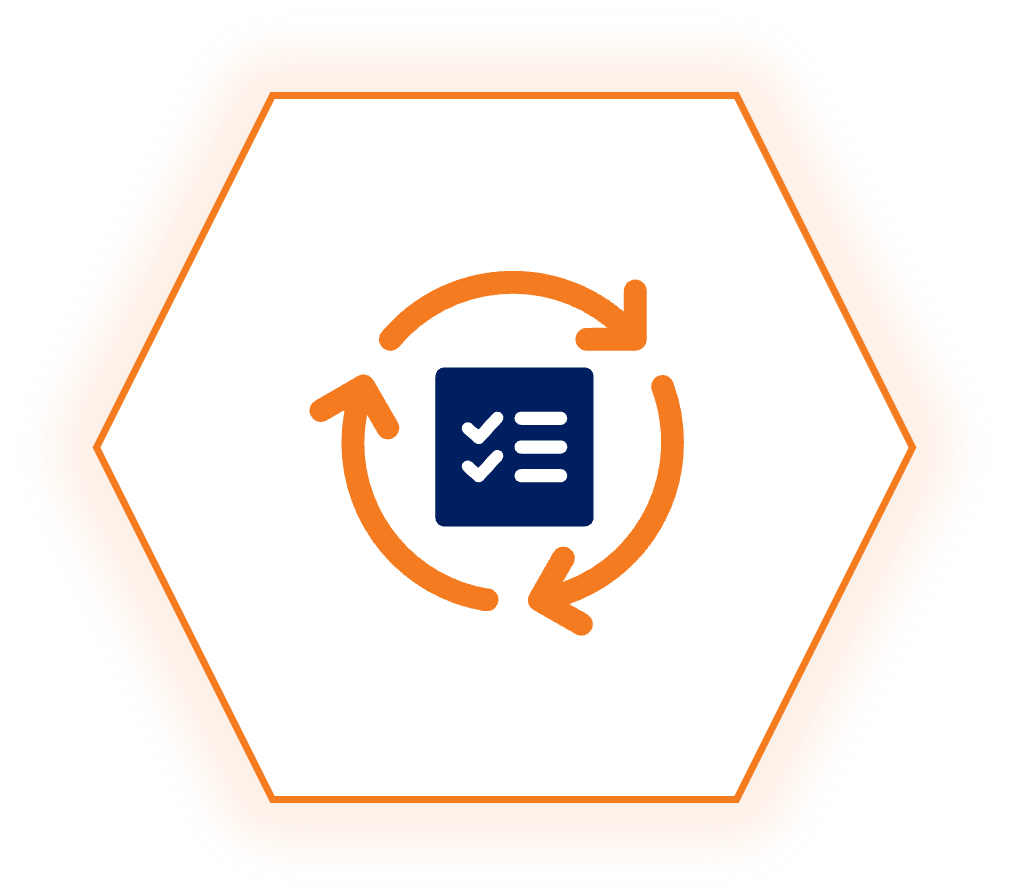Our client, a leading digital bank and payments services company with approximately $150 billion in assets, faced a critical compliance challenge and needed to address an FDIC consent order to improve its Bank Secrecy Act (BSA) and Anti-Money Laundering Act (AML) regulatory compliance.
Faced with stringent regulatory demands and compressed timelines, the client needed to bring their business processes and controls in line with regulatory standards swiftly and comprehensively. We stepped in to guide a comprehensive compliance transformation that addressed multiple aspects of regulatory compliance.
Strengthening accounting processes
The bank needed more than just compliance upgrades—it required a comprehensive overhaul of its processes, policies and controls. Achieving compliance meant addressing multiple aspects of the bank’s operations simultaneously.
Internal Accounting Processes
Strengthening the bank’s internal accounting processes was one priority. Through detailed interviews and walkthroughs, we gained a deep understanding of the bank’s workflows to identify inefficiencies and control gaps that posed risks.
Recommendations
The insights we gathered led to actionable recommendations that modernized over 100 accounting policies and established a more robust control environment. Enhanced controls not only minimized risks but also streamlined day-to-day operations, freeing up valuable resources for other critical compliance tasks.

AML program improvements
At the same time, we turned our attention to the bank’s AML compliance program, which was under scrutiny from regulators.
Risk Assessment Program
The regulators required a Risk Assessment Program addressing the bank’s sanctions policies and an immediate overhaul of existing protocols. We led a swift but thorough review, revising policies and conducting a detailed gap analysis to ensure alignment with regulatory expectations.
Assessment Methodology
In less than 30 days, we developed a comprehensive risk assessment methodology, enabling the bank to complete critical assessments on schedule. This rapid yet meticulous approach not only satisfied regulators but also reinforced the bank’s ability to manage sanctions risks proactively.
AML Training Program
Developing a comprehensive AML training program was also imperative to sustain compliance. Working closely with the bank’s AML specialists, we created targeted courses covering key compliance areas. This effort went beyond merely meeting regulatory expectations—it also helped embed a culture of compliance throughout the organization.
A compliance framework
Our work extended into developing a cohesive compliance framework, focusing on the interdependencies between different business units. By assessing and remediating over 140 processes, we ensured that each unit’s compliance efforts were both effective on their own and integrated with the broader compliance strategy. This holistic approach helped promote a unified standard across the organization.
Control Testing
Control testing was another critical component of our compliance remediation work. The bank needed to ensure that its internal controls were not only compliant but also resilient against evolving threats.
Control Reviews
We conducted thorough control reviews, utilizing both manual and automated testing techniques. The enhanced control testing protocols and continuous monitoring mechanisms we introduced helped the bank establish a more proactive compliance posture, allowing for vulnerabilities to be identified and addressed before they can escalate.

Cohesive Compliance Transformation
By addressing the various underlying compliance challenges with one overarching goal in mind, we helped the client transform its compliance infrastructure to not only achieve regulatory compliance but also lay a stronger foundation for long-term risk management and operational efficiency. This approach enabled the bank to safeguard its operations and reinforce trust with regulators and customers alike.





